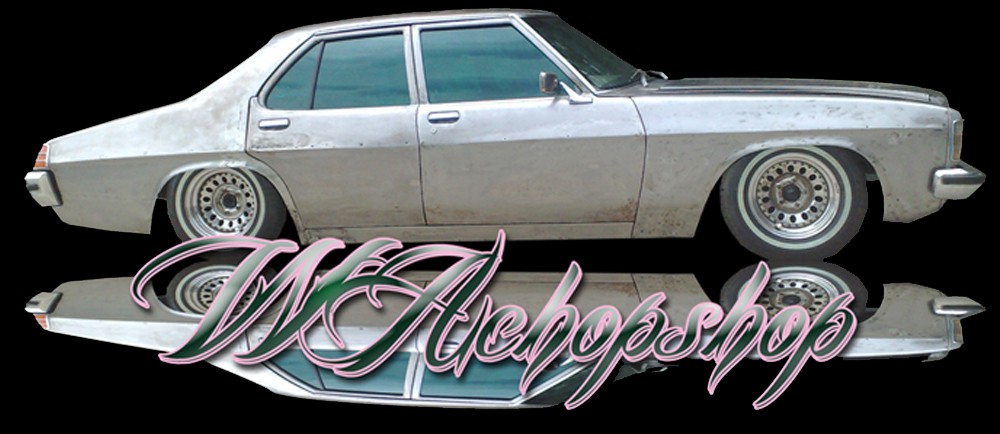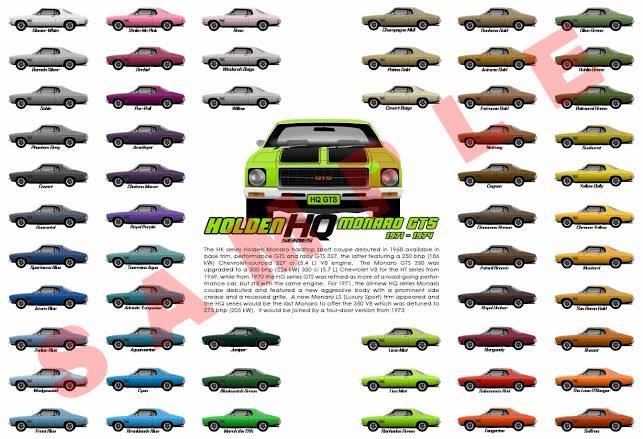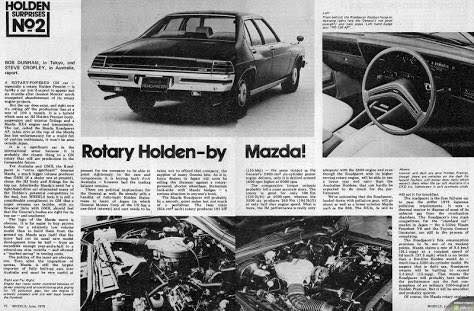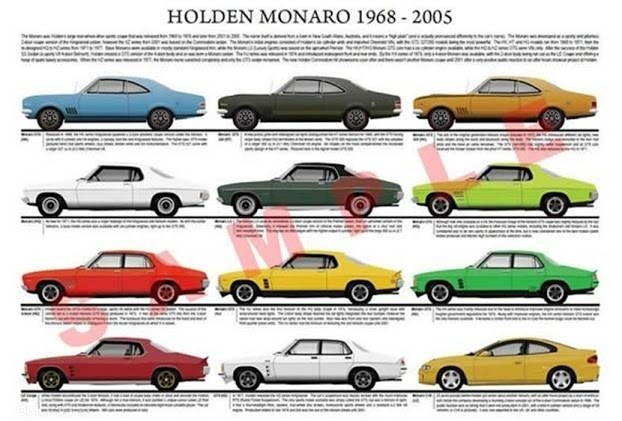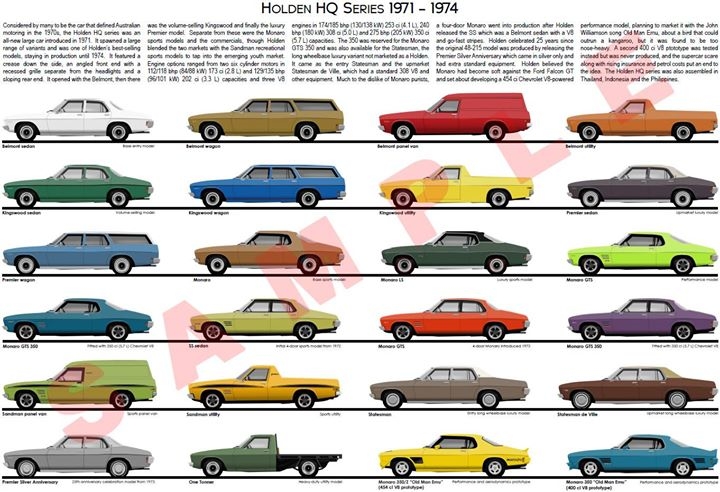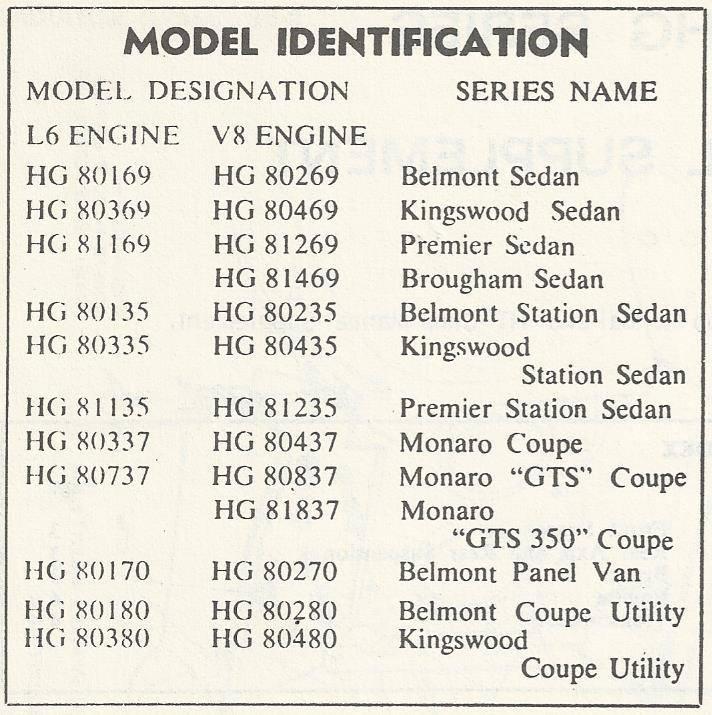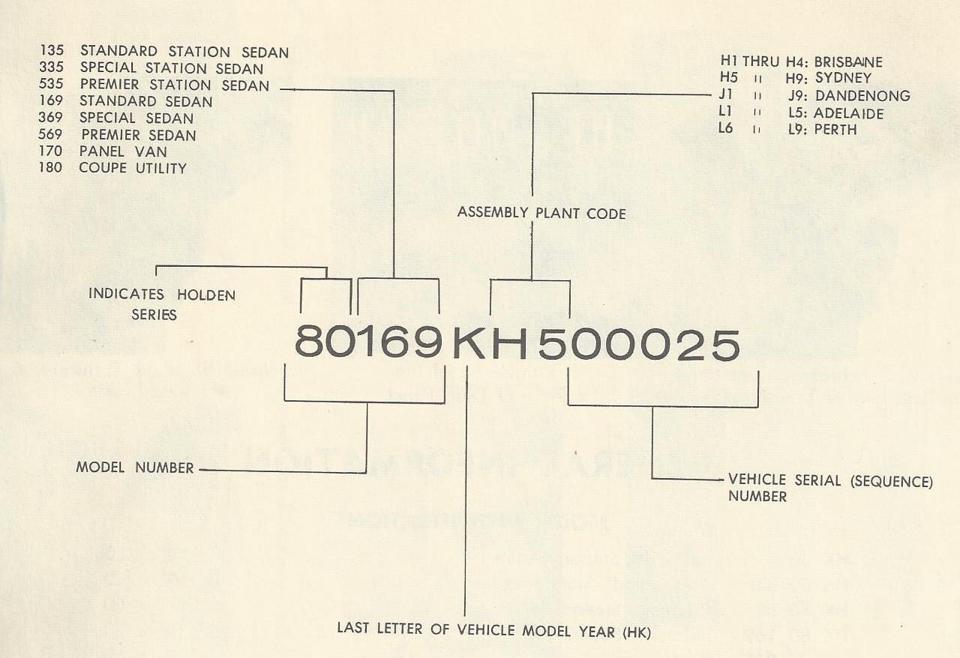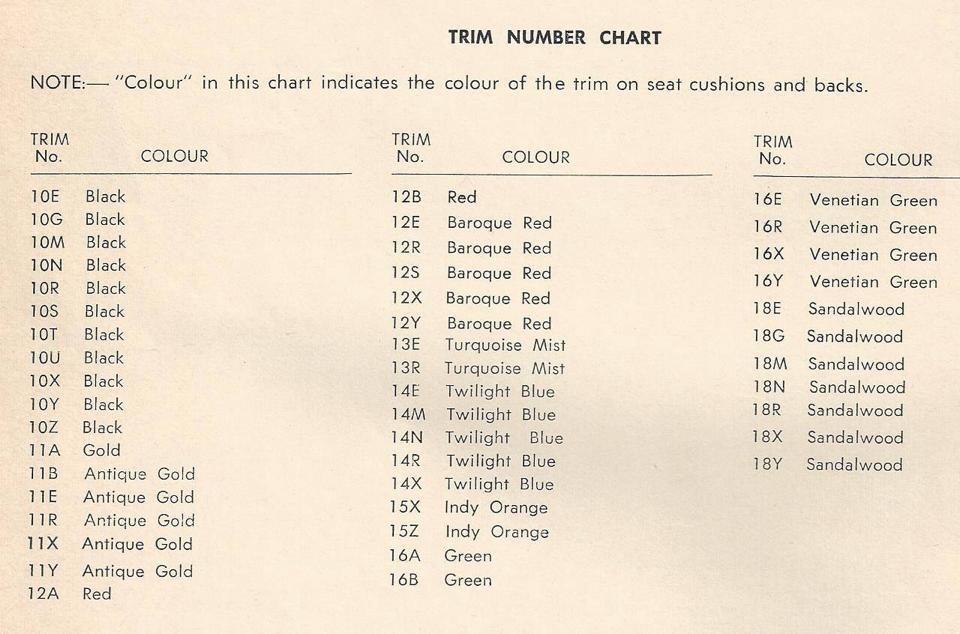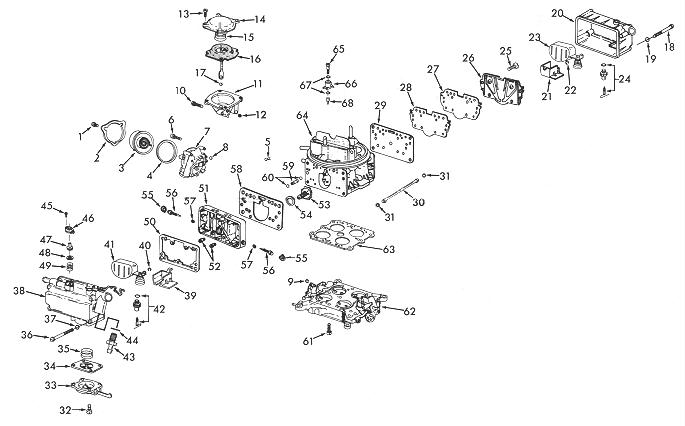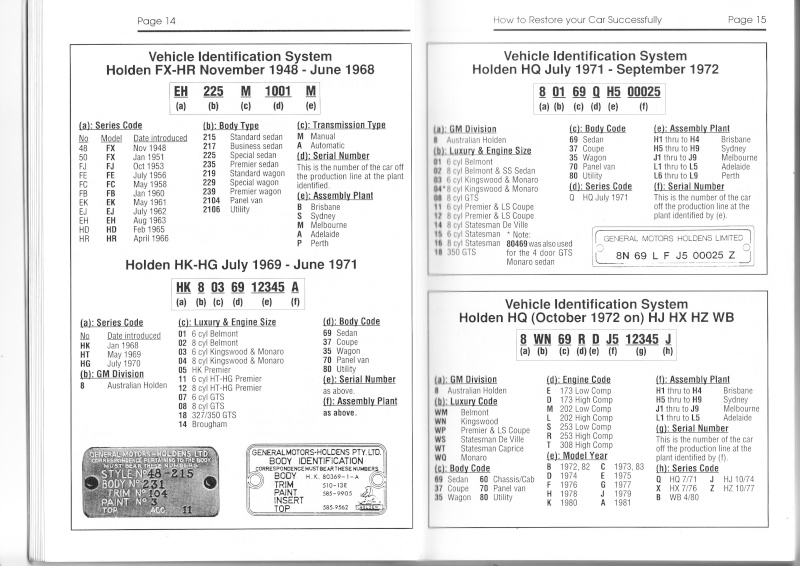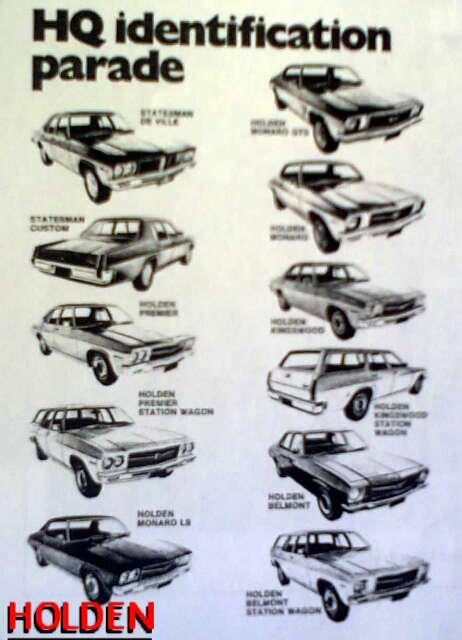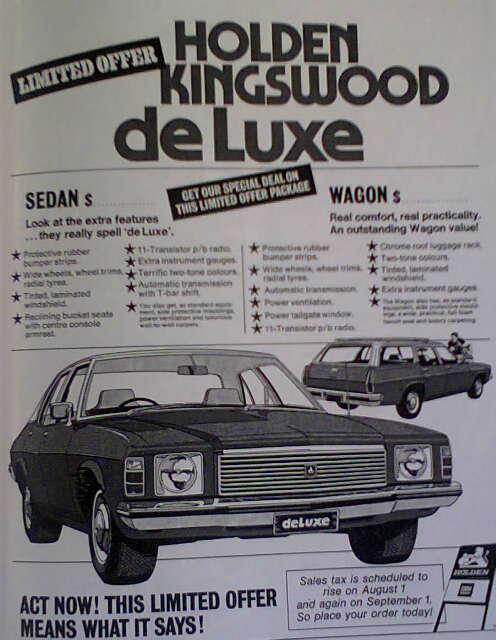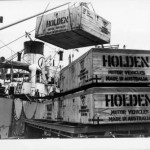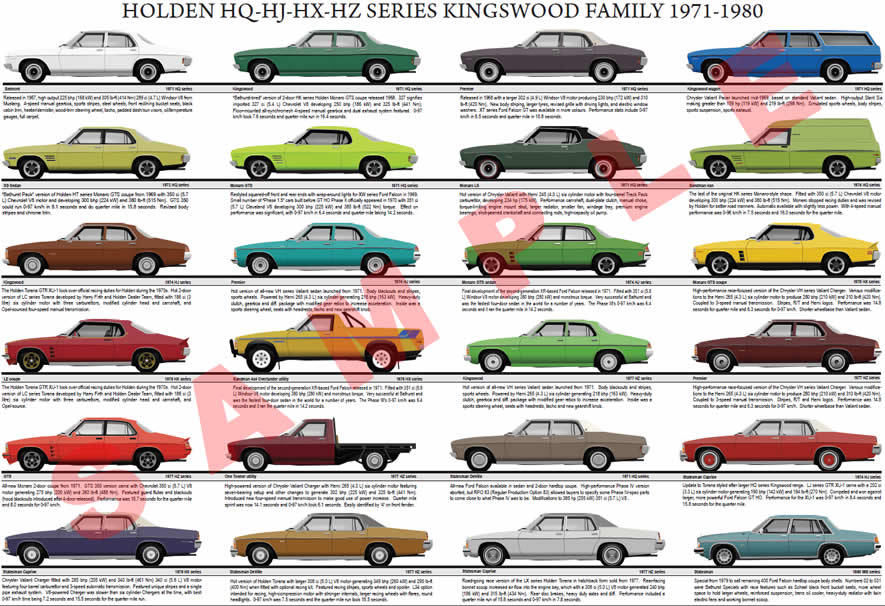
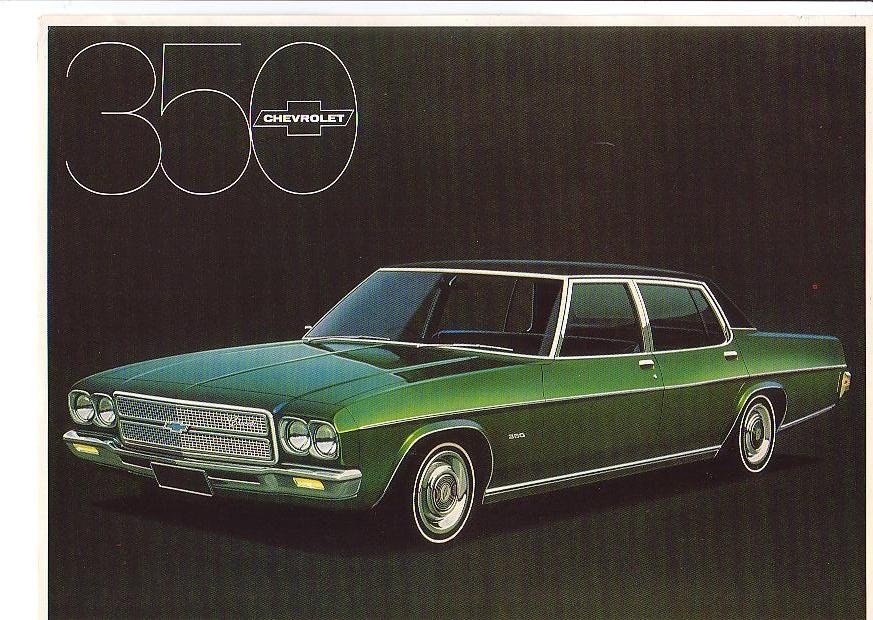
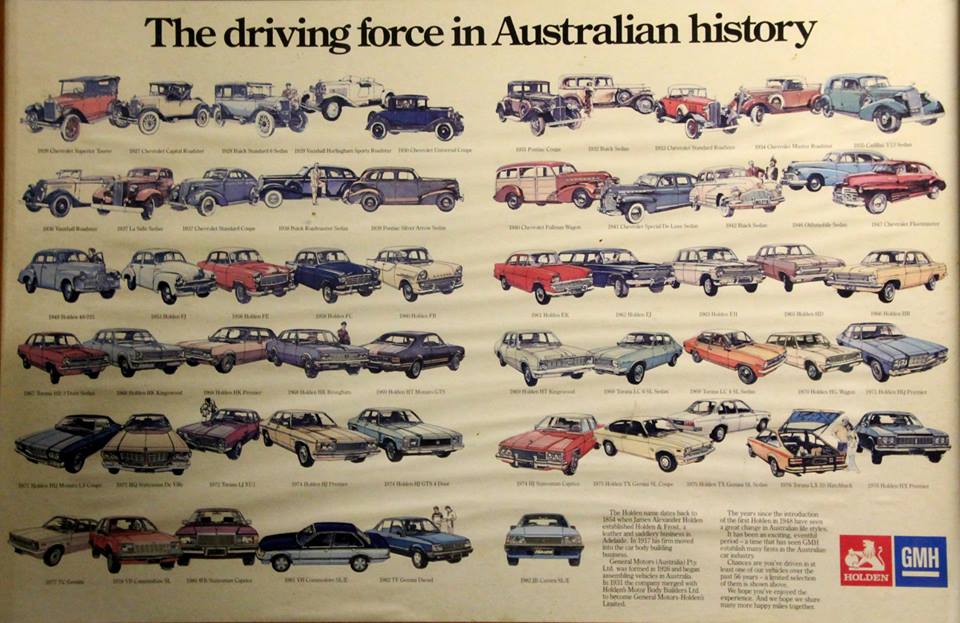
You didn’t know… Well here it is, fact-sheet data that we’ve come across that we would like to share with you.
Holden H-Series
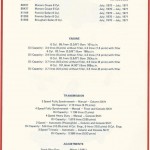
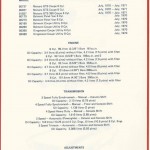
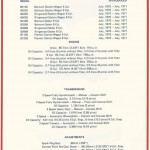
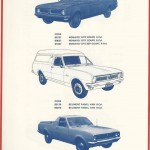
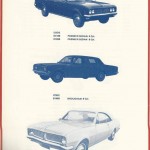
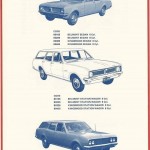

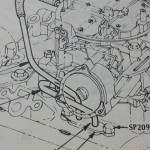
GMH ID Info
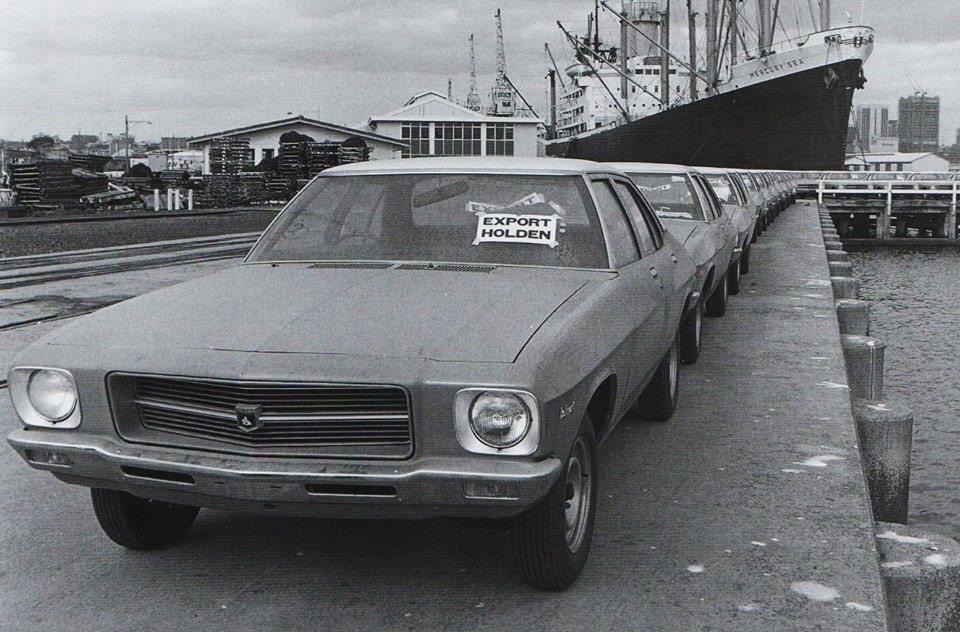
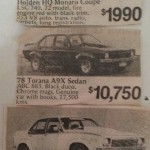
Models:
- Kingswood Sedan
- Kingswood SL Sedan
- Kingswood Station Wagon
- Kingswood SL Station Wagon
- Premier Sedan
- Premier Station Wagon
- Holden Chassis and Cab
- Holden Utility
- Holden Panel Van
- Monaro GTS Sedan
- Statesman DeVille Sedan
- Statesman Caprice Sedan
- Statesman SL/E Sedan
- Sandman Utility
- Sandman Panel Van
Exterior Dimensions:
-
- Total Length:
- Kingswood SL Sedan and Monaro GTS Sedan: 190.7 inches (4844mm)
- Premier Sedan: 192.0 inches (4877mm)
- Kingswood SL Station Wagon: 192.8 inches (4897mm)
- Premier Station Wagon: 193.4 inches (4912mm)
- Sandman Panel Van and Sandman Utility: 194.4 inches (4938mm)
- Total Width:
- Kingswood SL and Premier Sedans and Station Wagons: 74.5 inches (1892mm)
- Monaro GTS Sedan: 73.9 inches (1877mm)
- Sandman Panel Van and Utility: 73.9 inches (1877mm)
- Total Height at kerb weight:
- Kingswood SL Sedan: 55.1 inches (1399mm)
- Premier Sedan and Monaro GTS: 55.0 inches (1397mm)
- Kingswood SL Station Wagons: 55.7 inches (1415mm)
- Premier Station Wagon: 55.5 inches (1410mm)
- Sandman Panel Van: 63.2 inches (1608mm)
- Sandman Utility: 55.0 inches (1399mm)
- Wheelbase:
- Sedan and Monaro GTS: 111.0 inches (2819mm)
- Station Wagons and Sandman: 114.0 inches (2896mm)
- Front Track:
- Kingswood SL and Premier: 60.1 inches (1526mm)
- Monaro GTS and Sandman: 60.3 inches (1532mm)
- Rear Track:
- Kingswwod SL and Premier: 60.5 inches (1537mm)
- Monaro GTS and Sandman: 60.3 inches (1532mm)
- Total Length:
Kerb Weight:
-
- Kingswood SL Sedan: 2960lb (1342kg)
- Premier Sedan: 3062lb (1389kg)
- Monaro GTS Sedan: 3253lb (1475kg)
- Kingswood SL Station Wagon: 3145lb (1426kg)
- Premier Station Wagon: 3242lb (1470kg)
- Sandman Panel Van: 3177lb (1444kg)
- Sandman Utility: 3045lb (1384kg)
Instruments:
-
- All models:
- Speedometer (to 200 km/h) with integrated odometer
- Petrol gauge
- Water temperature gauge
- Warning lamp cluster including warning lamps for brake system failure, hand brake, high beam, turning signal, generaotr and oil pressure on GTS and Sandman
- Premier and Statesman:
- Clock (digital on Caprice)
- Oil pressure gauge (Caprice only)
- Battery Charge indicator
- Monaro GTS:
- Oil pressure gauge
- Water Temperature gauge
- Battery Charge indicator
- Clock
- Tachometer
- All models:
3.3 202 Engine:
-
- Capacity: 201.25 cubic inches (3.310 litres)
- Type: Conventional, watercooled four stroke, reciprocating piston type with 6 cylinders
- Configuration: Front mounted, longitudinal, inline
- Head: Pushrod and rocker actuated ohv with two valves per cylinder
- Fuel System: Bendix-Stromberg single barrel downdraft type carburettor
- Bore and Stroke: 3.625 x 3.25 inches (92.0 x 82.5mm)
- Power:
- Manual Transmission: 109bhp (81kw) at 3900rpm
- Automatic Transmission: 118bhp (88kw) at 4000rpm
- Torque:Compression Ratio: 9.4:1
- Manual Transmission: 185lb-ft (251Nm) at 1400rpm
- Automatic Transmission: 185lb-ft (251Nm) at 2100rpm
253 4.2 Litre V8 Engine:
-
- Capacity: 252.8 cubic inches (4.142 litres)
- Type: Conventional, watercooled four stroke, reciprocating piston type with 8 cylinders
- Configuration: Front mounted, longitudinal, Vee configuration
- Head: Pushrod and rocker actuated ohv with two valves per cylinder
- Fuel System: Twin barrel Bendix-Stromberg carburettor
- Bore and Stroke: 3.625 x 3.062 inches (92.0 x 77.7mm)
- Power: 161bhp (120kw) at 4550rpm
- Torque: 240lb-ft (325Nm) at 2600rpm
- Compression Ratio: 9.4:1
308 5 Litre V8 Engine:
-
- Capacity: 307.8 cubic inches (5.044 litres)
- Type: Conventional, watercooled four stroke, reciprocating piston type with 8 cylinders
- Configuration: Front mounted, longitudinal, Vee configuration
- Head: Pushrod and rocker actuated ohv with two valves per cylinder
- Fuel System: Four barrel Rochester Quadrajet type carburettor
- Bore and Stroke: 4.00 x 3.06 inches (101.6 x 77.7mm)
- Power: 216bhp (161kw) at 4800rpm
- Torque: 295lb-ft (400Nm) at 3100rpm
- Compression Ratio: 9.7:1
Engine Prefix:
-
- 202 HC 3300: XQL, ZL
- 253 HC 4200: QR, ZR
- 308 5000: QT, ZT
Ignition and Electrical:
-
- 12 volt with 40 amp alternator (55 amp when air-conditioning fitted)
- Pre-engaged drive starter motor, heavy capacity fitted for 5 litre
- Heavy duty battery and cables fitted to 5 litre
- Coil and distributor
Exhaust:
-
- Single exhaust pipe
- Single or optional Dual exhaust on vehicles fitted with V8
Manual Transmission (3 speed on 6 cylinder 3.3 litre and 4.2 litre V8):
-
- 1st: 3.07:1
- 2nd: 1.68:1
- 3rd: 1.00:1
- Reverse: 3.59:1
Manual Transmission (4 speed on 6 cylinder 3.3 litre and 4.2 litre V8):
-
- 1st: 3.05:1
- 2nd: 2.19:1
- 3rd: 1.51:1
- 4th: 1.00:1
- Reverse: 3.05:1
Manual Transmission (4 speed wide ratio on 6 cylinder 3.3 litre):
-
- 1st: 3.74:1
- 2nd: 2.68:1
- 3rd: 1.68:1
- 4th: 1.00:1
- Reverse: 3.72:1
Manual Transmission (4 speed wide ratio on 4.2 litre and 5 litre V8):
-
- 1st: 2.54:1
- 2nd: 1.83:1
- 3rd: 1.38:1
- 4th: 1.00:1
- Reverse: 2.54:1
Tri-Matic Automatic Transmission:
-
- 1st: 2.31:1
- 2nd: 1.46:1
- 3rd: 1.00:1
- Reverse: 1.85:1
Turbo-Hydramatic 400 Automatic:
-
- 1st: 2.48:1
- 2nd: 1.48:1
- 3rd: 1.00:1
- Reverse: 2.08:1
Clutch:
-
- GMH diaphragm single dry plate
- Belleville diaphragm
Rear Axle Ratio:
-
- 202 3.3 litre Six cylinder three speed manual transmission: 3.55:1
- 202 3.3 litre Six cylinder four speed manual transmission: 3.55:1
- 202 3.3 litre Six cylinder Tri-matic automatic transmission:
- Standard Axle Ratio: 3.36:1
- Economy Option Axle Ratio: 3.08:1
- Performance Option Axle Ratio: 3.55:1
- 253 4.2 litre V8 three and four speed manual transmission:
- Standard Axle Ratio: 3.08:1
- Performance Option Axle Ratio: 3.55:1
- 253 4.2 Litre V8 Tri-matic automatic transmission:
- Standard Axle Ratio: 3.08:1
- Economy Option Axle Ratio: 2.60:1
- Performance Option Axle Ratio: 3.55:1
- 308 5.0 litre V8 “High Performance” four speed manual transmission:
- Standard Axle Ratio: 3.36:1
- Economy Option Axle Ratio: 3.08:1
- Performance Option Axle Ratio: 3.55:1
Engine Combinations:
-
- 3.3 litre 202 standard on Kingswood SL and Premier, mated to three speed manual transmission. Optional four speed manual, four speed wide-ratio manual or Tri-Matic automatic. Tri-Matic standard on Premier
- 253 V8 standard on Monaro GTS and Sandman, and optional on all lower spec models. Standard with 3 speed manual (except GTS with 4 speed manual) and optional four speed manual or Tri-Matic automatic
- 308 V8 optional on all models, with “High Performance” 4 speed manual as standard, and Turbo-Hydramatic automatic as option
Transmission Combinations:
-
- Manual:
- 3 speed column change standard on Kingswood
- 4 speed floor mounted transmission optional, centre console optional on Kingswood
- Four speed all-synchromesh floor mounted gearbox standard on Monaro GTS
- Automatic:
- Tri-Matic 3 speed automatic standard on Premier, optional on all other models
- Turbo-Hydramatic automatic optional on Monaro GTS and Sandman
- Manual:
Top Speed in Gears:
-
- 202 6 cylinder HZ Kingswood Tri-Matic automatic:
- 1st: 51 mph (82 km/h)
- 2nd: 74 mph (119 km/h)
- 3rd: 97 mph (156 km/h)
- 0-100 km/h: 13.0 seconds
- Standing Quarter Mile (400 meters): 20.1 seconds
- 253 V8 HZ Premier Tri-Matic automatic:
- 1st: 44 mph (71 km/h)
- 2nd: 68 mph (110 km/h)
- 3rd: 101 mph (162 km/h)
- 0-100 km/h: 12.9 seconds
- Standing Quarter Mile (400 meters): 19.8 seconds
- 308 V8 HZ Sandman Panel Van Tri-Matic automatic:
- 1st: 52 mph (84 km/h)
- 2nd: 88 mph (142 km/h)
- 3rd: n/a
- 0-100 km/h: 9.6 seconds
- Standing Quarter Mile (400 meters): 18 seconds
- 308 V8 HZ Statesman Caprice Tri-Matic automatic:
- 1st: 48 mph (78 km/h)
- 2nd: 82 mph (132 km/h)
- 3rd: 103 mph (165 km/h)
- 0-100 km/h: 10.9 seconds
- Standing Quarter Mile (400 meters): 18.6 seconds
- 202 6 cylinder HZ Kingswood Tri-Matic automatic:
Performance HZ Statesman De Ville:
-
- Maximum speeds in gears (km/h)
- first – 85 / second – 142 / third – 170 approx.
- Acceleration from rest to –
- 60 km/h – 5.5 / 80 km/h – 8.3 / 100 km/h – 11.7 / 120 km/h – 16.9
- Acceleration from 60 km/h to –
- 100 km/h – 7.37
- Standing start to 400 meters -Braking – 110 km/h to rest (average) – 57m
- elapsed time – 17.7 / terminal speed (km/h – 124)
- Fuel consumption (litres per 100 km/mpg) driven normally – 18.2/15.6
- Maximum speeds in gears (km/h)
Suspension:
-
- Radial Tuned Suspension (RTS) introduced for the first time, and includes:Front: Independent SLA type, coil springs, stabilizer bar and direct acting tubular telescopic shocks.
- Road springs with modified rates and integrated overall balance
- Shock absorbers with revised tuning, larger piston diameter and revised body mounts
- Stabilizer bar at front increased in strength and weight
- New stabilizer bar now fitted to rear
- Front suspension incorporates larger front compression bumper
- Revised front and rear bushes
- New front control arm bracket
- Revised front control arm location
- Lower control arm bushings fitted to rear axle
- Rear: Live axle, four link system with coil springs and direct acting shocks, decoupled stabilizer bar
- Radial Tuned Suspension (RTS) introduced for the first time, and includes:Front: Independent SLA type, coil springs, stabilizer bar and direct acting tubular telescopic shocks.
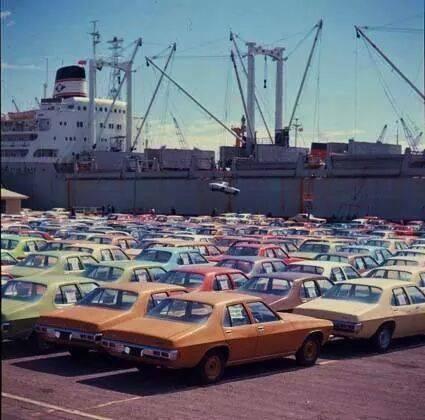
Steering:
-
- Energy absorbing steering column and shaft
- Recirculating ball type, ratio 25:1
- Optional power assisted variable ratio with hydraulic pump available to all models, ratios from 18:1 to 11.7:1
- Standard steering wheel is two spoked soft grip oval design, standard on all models excluding Monaro GTS and Sandman
- GTS and Sandman fitted with three spoked circular sports steering wheel,
Brakes:
-
- Front: Hydraulic 10.9inch (276mm) power assisted ventilated discs standard
- Rear: Hydraulic 10.0 inch (254mm) drums on all models excluding GTS
- Rear: Optional 11.5 inch (254mm) rear discs available on Kingswood SL and Premier sedans, standard equipment on Monaro GTS
Wheels:
-
- Short spoke steel disc wheels fitted to all models excluding GTS and Sandman, which were fitted with five spoke pressed steel type slotted rally wheels
- All models: 6.00JJ x 14
Tyres:
-
- Kingswood SL and Premier: ER78S14 Radial
- Monaro GTS: ER70H14 Steel Belted Radial
Holden HZ with Radial Tuned Suspension
You’re about to see a compelling demonstration of a genuine automotive engineering breakthrough. This is new Holden Kingswood SL, equipped like no previous Kingswood – with Radial Tuned Suspension. Watch it through this snaking ‘S’, smooth, safe, with a minimum of lean, average speed 75.96 kilometers per hour. Now watch some competitive cars, same test, same driver. Chrysler CL Valiant, Toyota Cressida. Here’s Kingswood SL again. Now XC Falcon 500, 240K Datsun, TE Cortina Six. Watch new Kingswood SL again, Holden’s stabilizer bars and suspension components are matched to the steel belted radial tyres – the Radial Tuned Suspension badge means safety and confident road holding – only Holden has it. Now with push-button radio, electric demister, quartz-halogen headlights. New Kingswood SL, with Radial Tuned Suspension – drive a real change for a change, at your Holden dealers now!
Press Release from Holden on Radial Tuned Suspension:
“All components are carefully engineered to increase Holden’s confident handling.”
The design of modern automotive suspension systems has reached a high degree of sophistification in Holden vehicles. Through the use of advanced computer simulation and technology, improved manufacturing materials and design, and highly skilled automotive suspension engineers, GMH was able to develop Radial Tuned Suspension.
Each suspension component – even the frame and body itself – had to be examined in detail and re-engineered as required in order to create RTS as a complete system. Neutral handling behaviour is the most important benefit of RTS, this means, in essence, that Holden will do what you want it to, and nothing unexpected will occur. By relocating the front upper control arm bracket for positive castor, we reduced under steer. In addition we increased static camber and decreased dynamic camber and toe change reducing the tendency of cars to “plough” toward the outer edge of the corner. The front and rear stabilizer bars reduce body lean and are synchronized to transfer cornering load for neutral handling behaviour.
RTS permits smooth ride without sacrificing good handling. Deeper four-coil suspension contributes smoothness and improved road-handling, while larger front compression bumpers reduce dynamic suspension travel and improve ground clearance.
The re-tuned, larger diameter shock absorbers have less fade, retaining effectiveness over rough terrain. As a result, tyres maintain contact with rough road surfaces, the ride is smooth and the driver stays in control.
High response steering results from the reduction of compliance, or “flex”, throughout the system. Holden’s steel belted radial tyres fitted on wide rims hold the tread to the road surface while cornering, rather than rolling under as do conventional cross-ply tyres. Front and rear suspension bushings are less compliant in cornering, while retaining longitudinal softness for smooth ride in normal driving.
High cornering force ultimately results from the degree of tyre adhesion to the road. This is increased by the use of steel-belted radial tyres, and the rest of the RTS system is designed to get the most from them. For one thing, the wheel rims and tyres have a revised offset giving Holden a wide-track. Larger diameter shock absorbers help keep the tyres on the road when it is rough. And again, the re-engineered castor and camber retain the proper wheel geometry to get the most from the steel belted radial tyres.
“Anti-dive” controls the amount of front end diving while braking for a greater feeling of control. Reduced body roll (or “lean” in corners) is accomplished by front and rear stabilizer bars working togther with re-engineered 4-coil suspension.
Maximum straight-ahead stability is the result of several RTS suspension components. Steel belted radial tyres, for example, are best in this characteristic. Where conventional cross-ply tyres will tend to pull the car to the right or left in tram tracks or pavement edges, the radial steel plies in Holden’s tyres tend to retain straight-ahead direction. Positive castor and negative camber also help keep the wheels straight ahead without driver effort. And all of these characteristics help retain straight-ahead stability in a sudden gust of wind, or the buffering from a passing truck.
A few more benefits of RTS are worth noting. Our tests indicate that Holden’s steel belted radial ply tyres increase the kilometer per dollar investment ratio in each tyre by 47%, and the fuel economy by 5% over the biased ply tyre. The durability of the suspension system has been increased. Road noise and vibration has been further reduced. And optional power steering has been redesigned for improved on-centre feel and more predictable driving control.
But it is all the components working togther as one system, which have made today’s Holden the best handling cars and wagons we have ever built.
More to come!!
